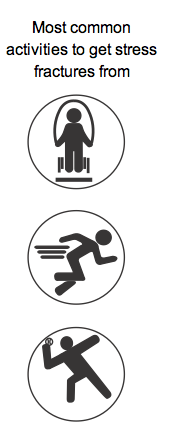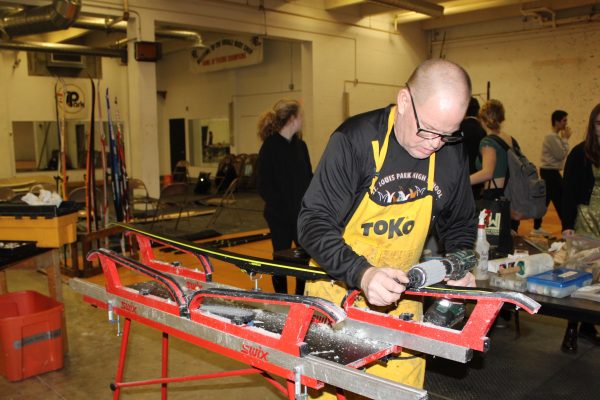The hidden enemy: stress fractures
January 11, 2015
 Mara Bacig
Mara Bacig
Stress fractures are the most common sports injury, according to a recent article done by American College of Sports Medicine. Strenuous exercise is hard on the body, as well as facing the injuries it causes along the way, which includes the most common one: a stress fracture.
A stress fracture is an overuse injury that occurs when muscles become fatigued and eventually form a small crack in the bone due to overload of stress, according to the American Academy of Orthopedic Surgeons.
When athletes hear the word “stress fracture,” that could mean four to six weeks of recovery without any sort of physical activity. Most stress fractures occur in the weight-bearing bones of the lower leg and foot. More than 50 percent of all stress fractures occur in the lower leg according to a recent study done by the University of Wisconsin School of Medicine and Public Health.
Many athletes are faced with this common injury but have found helpful ways to prevent it from happening again.
According to St. Louis Park’s trainer Julie Wolf, the following are a possible signs of a stress fracture: constant pains when walking or sitting down, pain becomes more point specific and continuous injuries in the same part of the lower leg and foot.
Senior Crista Ocampo has had multiple stress fractures ever since playing soccer her freshman year.
“My first stress fracture was at the beginning of freshman year during the soccer season. I collided with one of my teammates and didn’t realize I had a stress fracture until after the game,” Ocampo said. “The second time I got a stress fracture was during the track season that year and was put in a boot. I was in a boot for three months and couldn’t run on it for another three months after that.”
According to Ocampo, there are are many ways to help prevent a stress fracture.
“Strengthening your legs and preventing injury are two really important things when trying to avoid getting a stress fracture,” Ocampo said.
Wolf said prevention and recuperation are the two most critical things to do after being diagnosed with a stress fracture.
“Getting footwear to support any type of arches your feet have is extremely important. Icing specific areas after exercise and doing cross training, which is doing any sort of exercise that is not as strenuous on your bones is very impactful for preventing stress fractures,” Wolf said.
Making a routine to do after exercising is another way to prevent injury according to Wolf.
“Creating rules for yourself after strenuous exercise is extremely beneficial, depending on the severity of the injury,” added Wolf.
The first and most important rule is to stretch after exercising. Stretching is a way to reduce stress on the muscles as well as help the body relax after exertion.
Next is to maintain a healthy diet. Incorporating calcium and Vitamin D in meals after exercise is vital for maintaining a strong healthy body. A healthy diet is extremely important for athlete’s to try and maintain because foods high in protein and vitamins actually reduce to risk of getting a stress fracture according to a recent article Runners Connect.
Lastly, it is important to recognize pain. If the symptoms are caught early enough and treated appropriately, it is acceptable to return to the exercise practiced beforehand.













